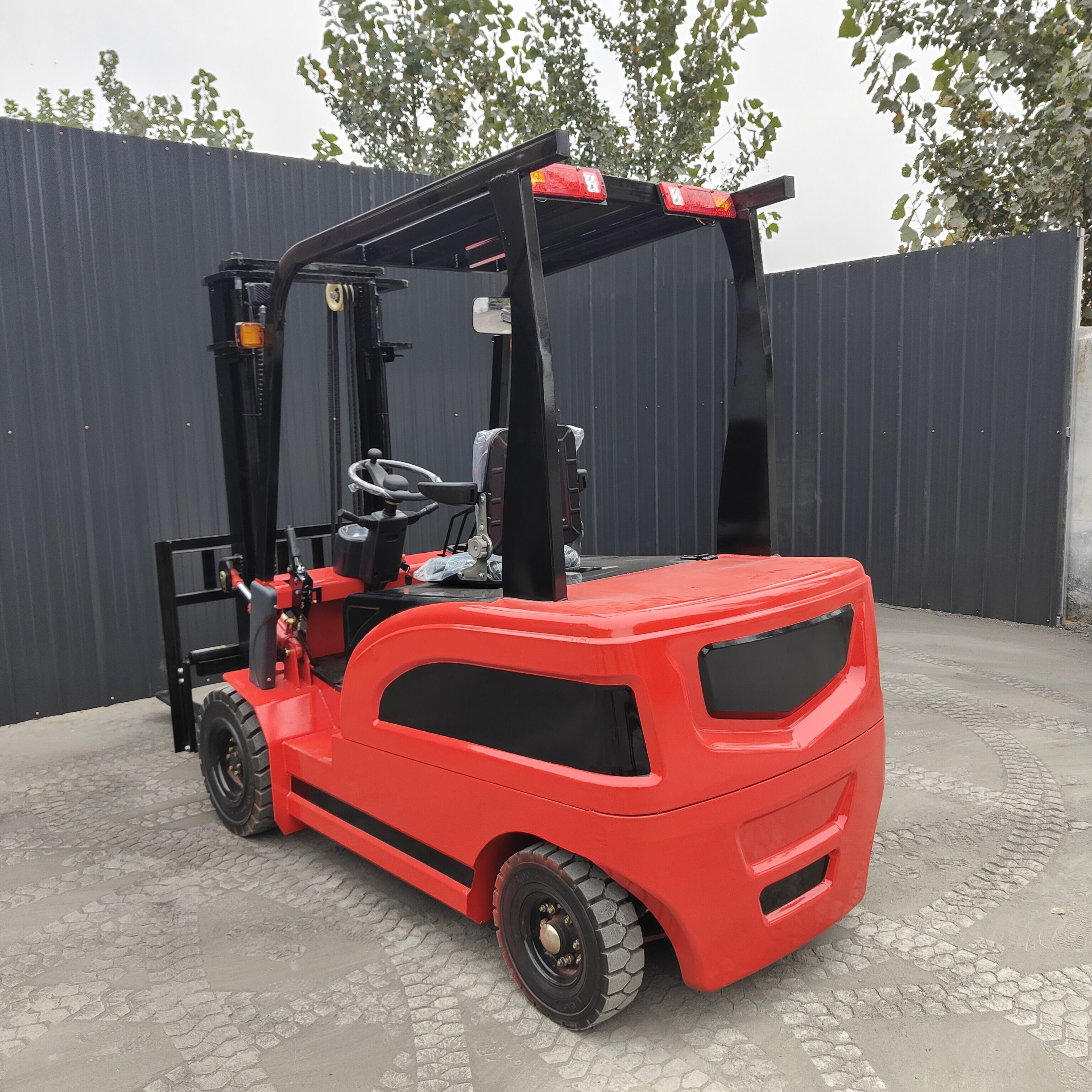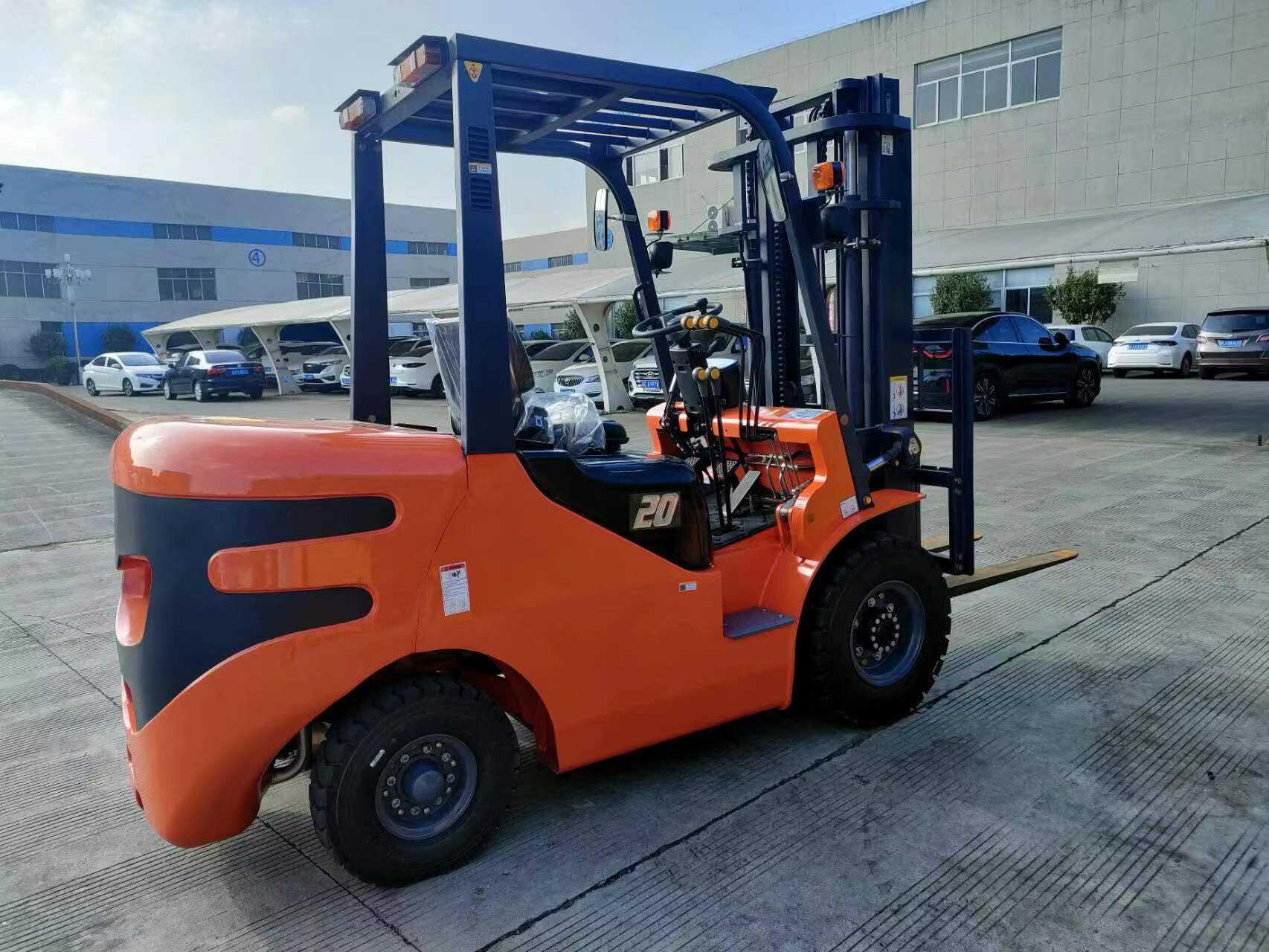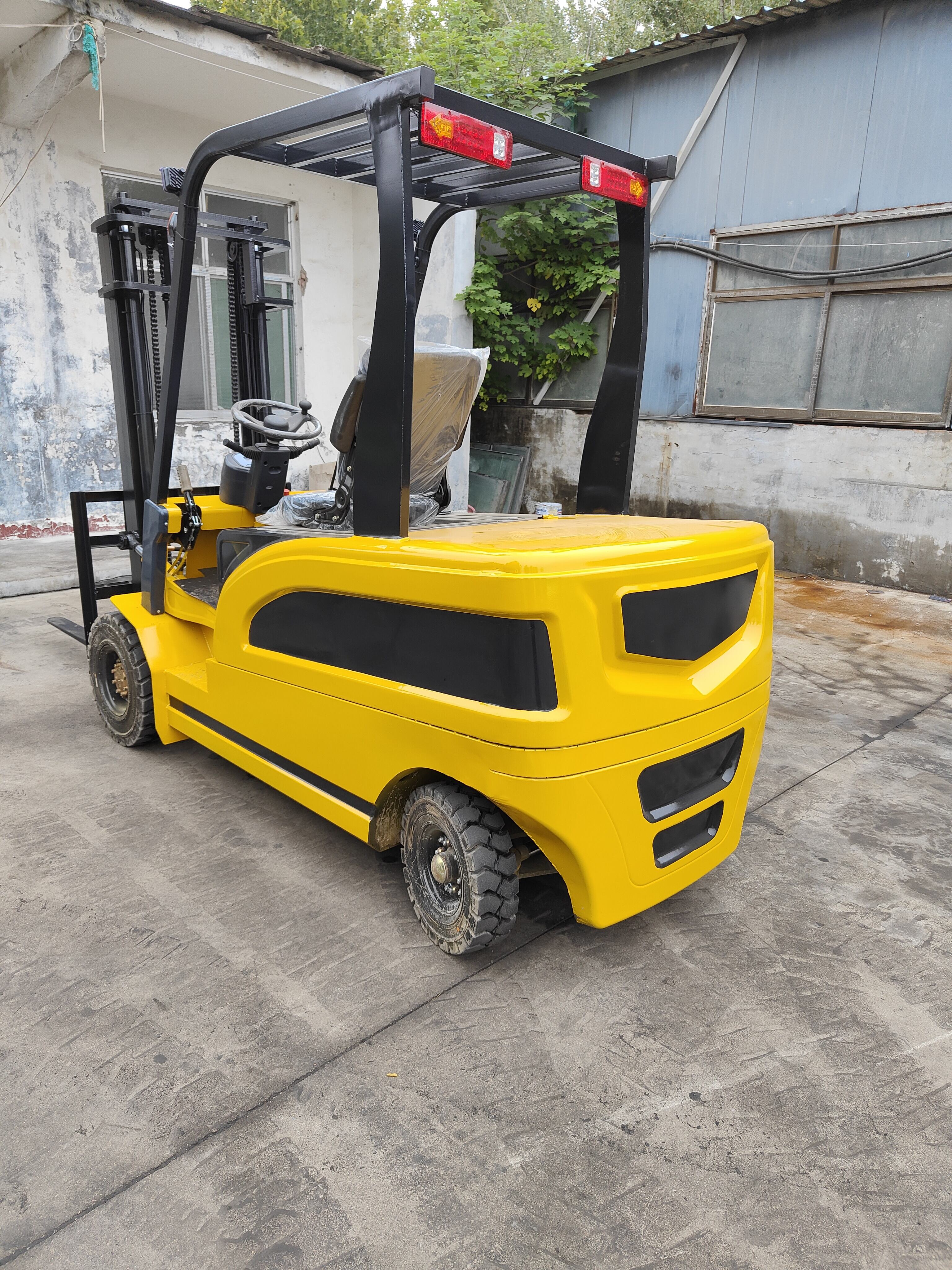Maintenance and Optimization Tips for Electric Forklifts
Essential Electric Forklift Maintenance Checks
Maintaining electric forklifts is crucial for ensuring their longevity and performance. Regular maintenance not only enhances safety and efficiency but also minimizes downtime and repair costs. By integrating detailed maintenance protocols into daily operations, businesses can effectively reduce the risk of accidents and extend the lifespan of their forklifts.
Daily Inspection Protocols for Optimal Performance
Checking electric forklifts every day helps catch problems before they cause trouble during operations. Look at key parts such as the brakes, lights, and steering system each morning to make sure everything works properly. These checks matter a lot because warehouses and factories get pretty hectic, and nobody wants equipment failures when workers are moving around with heavy loads. When something looks off, write it down right away and fix it without delay. Keeping track of these observations over time actually makes workplaces safer while saving money on bigger repairs later. Most experienced warehouse managers know that regular checkups form the backbone of good maintenance practices, ensuring their electric lift trucks stay reliable throughout their service life.
Battery System Care and Charging Best Practices
Taking good care of batteries really matters when it comes to how well electric forklifts perform day after day. Following what the manufacturer says about charging helps avoid problems like overheating which can wreck the whole system. Investing in smart chargers makes sense too since they cut down on charging time while actually making batteries last longer than regular ones do. Don't forget those basic tasks either – keeping terminals clean and looking out for signs of corrosion ensures electricity flows properly through the connections. Maintenance isn't just something to tick off a list; it plays a big role in keeping electric forklift operations running smoothly without unexpected breakdowns. Stick with these simple routines and the battery should serve much longer before needing replacement, saving money and downtime in the long run.
Tire Maintenance for Enhanced Stability
The tires on a forklift are really important for keeping it stable and safe during operation. Checking them regularly for signs of wear, damage, and making sure they're properly inflated should be something every operator does as part of their routine checks. Different kinds of tires exist too - pneumatic ones that have air inside versus solid rubber tires. Knowing which type your equipment uses helps when figuring out what kind of care each needs specifically. When tires start showing damage, getting them replaced quickly matters a lot because bad tires mean poor grip on the floor, which leads to slips and falls. Taking good care of forklift tires isn't just about keeping the machine steady though; it actually makes workplaces safer overall by reducing accident risks significantly.
Optimizing Battery Efficiency in Electric Forklifts
Extending Battery Lifespan with Smart Charging
Putting in place a smart charging system really helps control those charging cycles and keeps batteries lasting longer in electric forklifts. These smart chargers know when to speed things up or slow down depending on what condition the battery is actually in, so they stop problems like overcharging which just wears out batteries faster than normal. Training workers about proper battery maintenance matters too because nobody wants their equipment sitting around unused while waiting for replacement parts. Show them how to watch those charge patterns closely and spot when something isn't quite right with the battery performance. When companies combine good tech solutions with solid employee education programs, they end up getting way better results from their batteries overall. For warehouse managers trying to cut down expenses related to constantly replacing worn out batteries, this kind of approach pays off handsomely in the long run.
Monitoring Fluid Levels and Terminal Health
Keeping an eye on fluid levels and checking those battery terminals regularly makes all the difference when it comes to getting good life out of electric forklift batteries. For lead acid models specifically, making sure there's enough electrolyte in there stops things from breaking down over time. Don't forget to give those terminals a good look too - dirt and grime build up leads to oxidation problems that mess with how well the battery works. There are actually some pretty handy diagnostic tools available now that let technicians spot trouble spots before they become big headaches. Most warehouse managers find that adding these simple checks to their regular maintenance routines keeps their fleet running smoothly day after day while cutting down on unexpected breakdowns that nobody wants during busy periods.
Safety and Compliance for Electric Forklift Operations
OSHA-Approved Load Handling Guidelines
Following OSHA rules about how loads are handled and making sure operators get proper training isn't just good practice but actually vital for keeping things running safely. Knowing what weight limits are and where the center of gravity sits makes all the difference when trying to stay stable and avoid accidents on site. We've seen plenty of incidents where forklifts tipped over because someone overloaded them or didn't distribute the cargo properly across the forks. Regular refresher courses for the people operating these machines really help drive home those important points about managing loads correctly. When companies invest time in this kind of training, they not only create a safer work environment but also tend to see noticeable improvements in how efficiently materials get moved around day to day.
Mast Stability and Hydraulic System Checks
Keeping an eye on the mast and hydraulic systems of electric forklifts makes all the difference when it comes to staying safe and getting good performance out of them. Look out for any leaks in those hydraulic lines during routine checks and keep the fluid at proper levels so everything runs smoothly. Most manufacturers provide detailed service guides that tell exactly what needs doing and when. Following these guidelines isn't just about ticking boxes though. When done right, regular maintenance cuts down on surprise breakdowns that can halt production completely. Plus, properly maintained forklifts last much longer before needing replacement, which saves money in the long run while keeping operations running efficiently day after day.
Top Electric Forklift Models for Efficient Operations
3.5ton Electric Forklift Truck: Heavy-Duty Powerhouse
The 3.5 ton electric forklift truck has become a go-to option for warehouse managers dealing with heavy loads day in and day out. Built tough enough to handle the rigors of industrial settings, this machine can keep going through long shifts without breaking a sweat. What really sets it apart are those powerful travel and lift motors that continue performing smoothly even when carrying the maximum load of 3500 kilograms across the facility floor. Operators appreciate the battery system which typically lasts around 8 hours straight before needing a recharge, making it possible to complete entire work cycles without interruption. Real world feedback from logistics companies shows this forklift maintains exceptional stability during operation while delivering reliable performance over time. Many businesses report fewer maintenance issues compared to similar models on the market.
HT2ton-2.5ton Electric Forklift: Compact Flexibility
The HT2ton-2.5ton Electric Forklift was built specifically for those tough to reach areas where space is at a premium, making it ideal for busy warehouses packed with inventory. What really stands out is how well it moves around thanks to its steering system that lets operators glide through even the narrowest storage corridors without hassle. Safety isn't overlooked either. The machine comes standard with responsive brakes that kick in fast when needed and has built-in protection against overloading that activates instantly if weight limits are exceeded. Warehouse managers who have tested similar models report that this particular forklift handles all sorts of tasks while still keeping workers safe and operations running smoothly. Interested in seeing what makes this electric forklift different? Check out our detailed specs page here.
HT25 Electric Forklift: Precision Maneuverability
The HT25 Electric Forklift really stands out when it comes to handling stuff with care, especially inside warehouses and factories where space is limited. The controls are pretty advanced too, giving operators better control over what they're doing, so even when moving heavier items around, everything stays under control. What makes this model special though is how small it actually is compared to other forklifts on the market today. This means workers can navigate through narrow aisles and tight corners without much trouble at all. Many people who have used these machines talk about how dependable they are during busy periods or when conditions get tough. Some warehouse managers mention being able to stack inventory twice as fast as before thanks to this machine's performance. Anyone interested in seeing exactly what specs come standard or reading actual feedback from real users should take a look at the HT25 Electric Forklift page online.
Enhancing Long-Term Performance Through Upgrades
Integrating IoT for Predictive Maintenance
Bringing IoT tech into electric forklifts transforms how we approach maintenance. These systems use data analysis to spot when parts might need attention before problems happen. Smart sensors attached to the machines watch over various aspects of performance. They check things like vibrations from moving parts, temperature changes in fluids, and even wear on brakes. All this information gets sent instantly to either handheld devices carried around by workers or stored centrally somewhere. What does this mean for business owners? Less surprise breakdowns during operations and faster fixes when something goes wrong. That translates to smoother day-to-day running without those costly interruptions. A recent study mentioned somewhere (can't remember who did it) suggests businesses cutting down on maintenance expenses by nearly 30% after adopting similar approaches. Considering all these savings, investing in these kinds of technologies becomes pretty appealing for anyone managing a fleet of electric lift trucks.
Load Capacity Optimization Strategies
Keeping electric forklifts within their safe load limits matters a lot when it comes to both getting work done efficiently and staying safe around the warehouse. When companies focus on optimizing what these machines can carry, they actually end up handling materials better without compromising performance. Operator training makes all the difference too. People who know how to distribute loads properly and understand those weight restrictions tend to avoid overloading situations and keep the forklift balanced during operation. Just making sure things are spread out evenly across the pallet can cut down on tip-over incidents and put less stress on the machine components. According to studies conducted by NIOSH, forklifts that have been set up with optimal load capacities see improvements in safety metrics and overall performance somewhere around 25 percent. Companies that prioritize this kind of load management not only get better results day to day but also find their equipment lasts longer since there's less constant wear and tear happening behind the scenes.
McKinsey & Company. (2018). "The Promise of Predictive Maintenance."
National Institute for Occupational Safety and Health (NIOSH).




